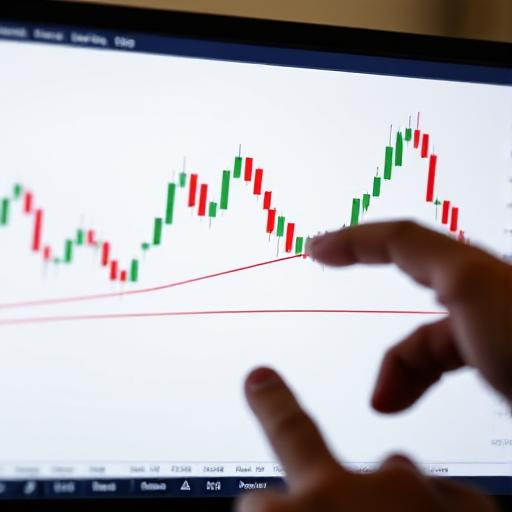Forex trading revolves around analyzing price movements, and forex charts are the foundation of every trading decision. However, for beginners, these charts can be overwhelming at first. Understanding how to interpret them correctly can significantly improve trading accuracy and profitability. In this guide, we’ll break down the essential aspects of forex charts so you can confidently analyze them like a pro.
1. Understanding Different Chart Types
Before diving deep into forex analysis, you must first familiarize yourself with the three primary chart types:
- Line Charts – The simplest form of forex charts, showing a single line that connects closing prices over time. They provide a clear overview of trends but lack detailed price movement insights.
- Bar Charts – These charts provide more information by displaying the open, high, low, and close (OHLC) prices for each time period.
- Candlestick Charts – The most widely used chart type among traders. Candlestick charts provide a visual representation of price action, making it easier to spot patterns and market sentiment.
For most traders, candlestick charts are the preferred choice due to their ability to convey detailed price movements in a simple format.
2. Mastering Candlestick Patterns
Candlestick patterns play a crucial role in predicting price reversals and trend continuations. Some important patterns to recognize include:
- Doji – A candle with a small or nonexistent body, signaling indecision in the market.
- Hammer – A bullish reversal pattern that indicates potential upward movement after a downtrend.
- Engulfing Candle – A strong reversal signal where a larger candle completely engulfs the previous one, signaling a shift in momentum.
Learning these patterns will help traders anticipate potential price movements and make informed trading decisions.
3. Identifying Market Trends
Understanding trends is a key skill for any forex trader. There are three main trend types:
- Uptrend – Characterized by higher highs and higher lows, indicating bullish market conditions.
- Downtrend – Defined by lower highs and lower lows, signaling bearish conditions.
- Sideways (Range) Market – Prices fluctuate within a range without a clear upward or downward trend.
To better visualize trends, traders often use trendlines, which are drawn along the price movements to highlight the market’s overall direction.
4. Using Support and Resistance Levels
Support and resistance levels are essential tools in technical analysis.
- Support Level – A price point where demand is strong enough to prevent further declines.
- Resistance Level – A price point where selling pressure is high, preventing further price increases.
Traders use these levels to determine strategic entry and exit points for trades, making them fundamental in risk management.
5. Enhancing Analysis with Technical Indicators
Technical indicators complement chart analysis by confirming trends and highlighting potential opportunities. Some popular indicators include:
- Moving Averages – Help smooth price data to identify trends over time.
- Relative Strength Index (RSI) – Measures the speed and change of price movements to determine overbought or oversold conditions.
- Moving Average Convergence Divergence (MACD) – A trend-following indicator that helps traders identify potential buy and sell signals.
By combining technical indicators with chart analysis, traders can make more precise and informed decisions.
Conclusion
Mastering forex chart reading takes time and practice, but by understanding chart types, candlestick patterns, trends, support and resistance levels, and technical indicators, you can gain a significant edge in the market.
Ready to improve your trading skills? Stay updated with our latest market analysis and forex tips to enhance your trading strategy!

